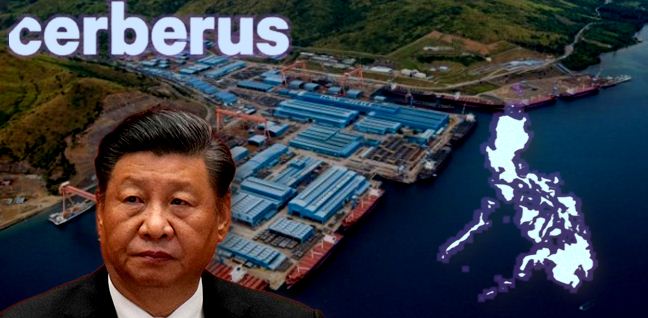The latest Nikkei Asia report has revealed that Cerberus Capital Management, a U.S. private equity company, is all set to take over the bankrupt Hanjin shipyard located in Subic Bay in the Philippines.
Read more: The Philippines makes China-loving Netflix remove its pro-CCP episodes
And while it may seem like a usual commercial deal, it isn’t. We are talking about a strategic shipyard that opens onto the disputed South China Sea. Beijing wanted to take it over for obvious reasons, but it has been beaten in the race by Cerberus.
Subic shipyard deal finalised
As per Nikkei Asia, the deal has been finalized by the three main parties- Cerberus, shipyard owner Hanjin Heavy Industries and Construction, and its creditors. They are now in the process of preparing final documents and are looking to conclude the deal by April 15.
Cerberus has been in exclusive talks with Hanjin creditors since 2019. Therefore, a deal for the shipyard was keenly awaited but it got delayed partly because of the Pandemic that disrupted the world economy. However, it seems that the deal will finally get through.
Subic shipyard- a highly strategic asset in the Philippines
At the end of the day, the location of the shipyard holds prominence. It opens on to the disputed South China Sea, where Chinese navy vessels and fishing militia have been frequently bullying other South China Sea claimants.
Under its ‘nine-dash line’, China claims sovereignty over the entire South China Sea. And the Philippines is more specifically concerned about Chinese aggression against it in Filipino geographical areas like Scarborough Shoal and Whitsun Reef. China with its high handedness has been controlling Scarborough Shoal since 2012 and is presently trying to take over the Whitsun Reef too.
This is why the Subic Bay becomes strategically crucial. And with its deep harbour, Subic Bay is tailor-made for military operations. It was an American military facility for long as nine decades and served as a critical supply and maintenance hub during Vietnam and the Cold War era.
In 1991, the renewal of bases agreement was repealed by the Philippine Senate and Subic ceased to function as a US military base. Thereafter, it was developed into a freeport and industrial zone. Subic used to be a booming business hub in the Philippines and attracted manufacturers and other foreign businesses. Interestingly, Subic was also FedEx’s regional hub until 2009.
The shipyard also used to be a major employer in the Southeast Asian nation, before it filed for bankruptcy protection in 2019.
Given the shipyard’s strategic location, even the Philippine Navy has sought a space in the northern portion to enhance its maritime security operations.
Filipino defence establishment opposed Chinese presence
Despite the shipyard’s booming business, Hanjin Heavy Industries and Construction fell into financial trouble owing to an oversupply of cargo vessels. It defaulted on $1.3 billion in loans. China was eyeing this opportunity and had even expressed interest in the yard.
China would have presented its proposal to take over the yard as a business proposition. But with the CCP exercising the kind of control that it exerts over private Chinese business, it is doubtless that it would have somehow dragged the People’s Liberation Army (PLA) into the strategic shipyard. This is why the Philippine defence establishment opposed any Chinese involvement and ensured that China was kept away from Subic.
Ultimately, China has failed to grab the strategic shipyard which ought to be hailed as a win for the Philippines ‘ anti-China defence establishment.
